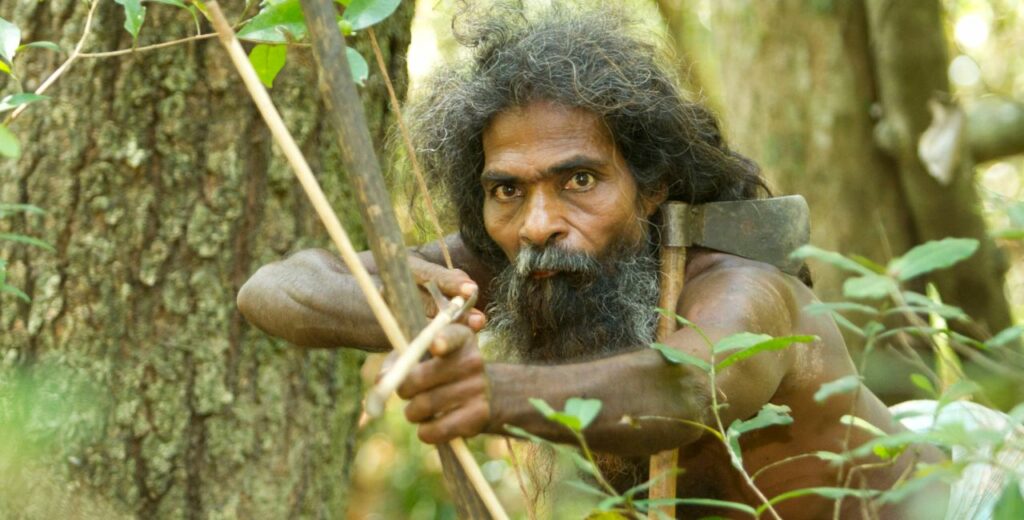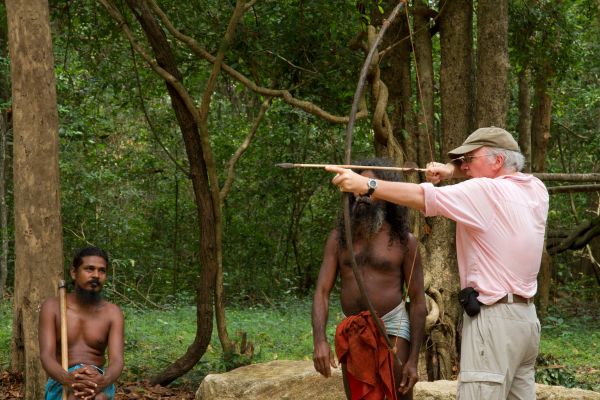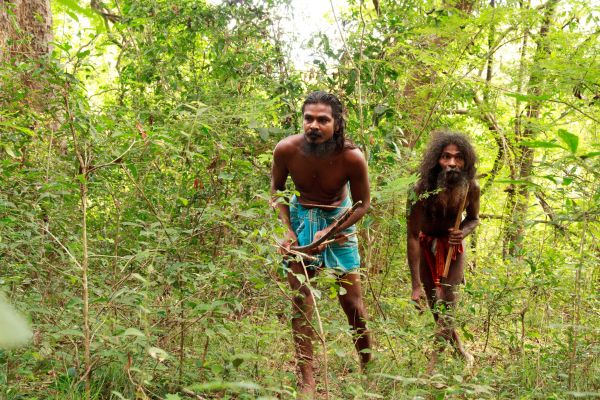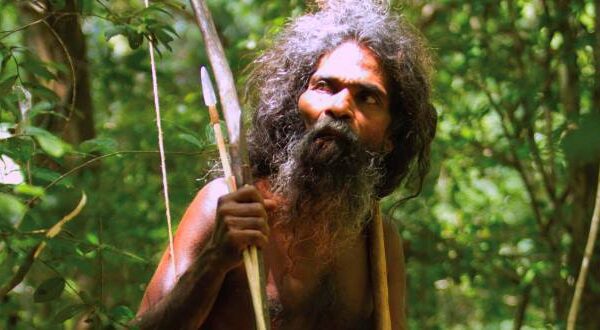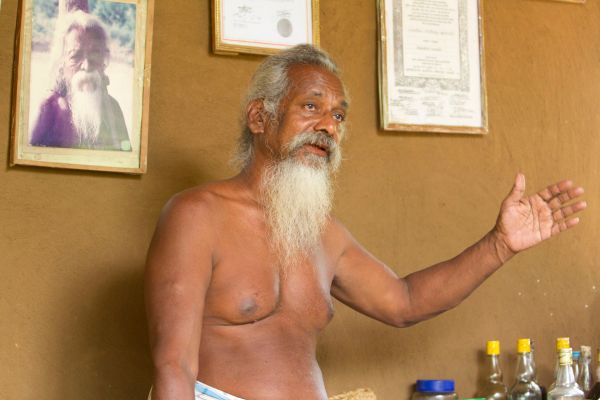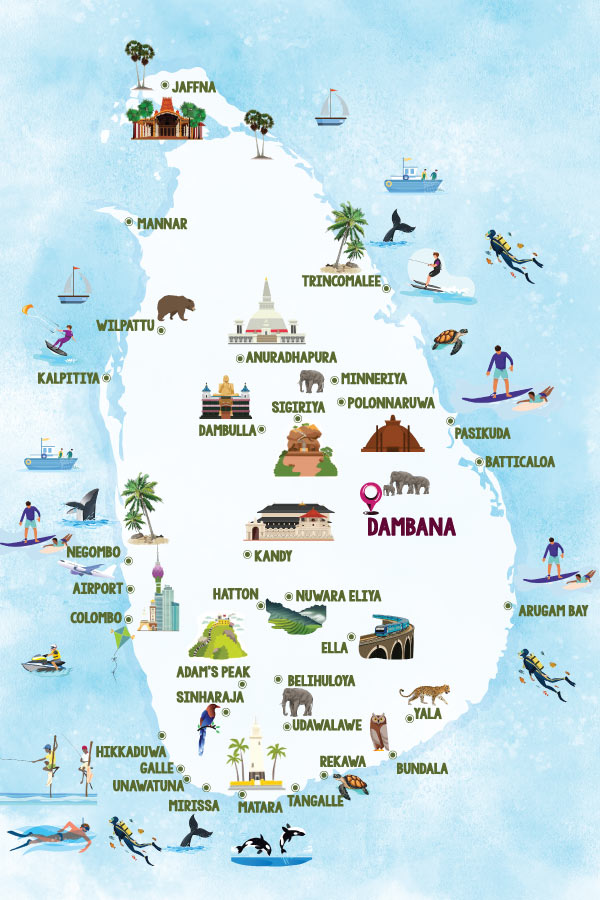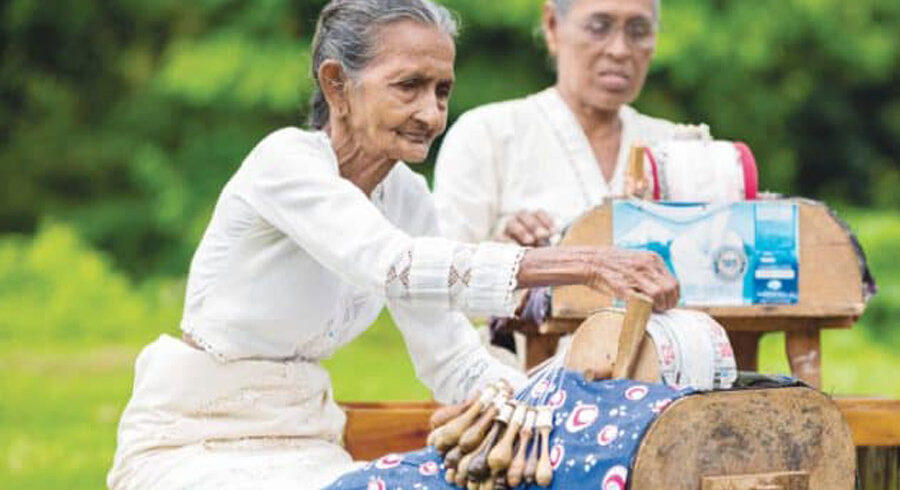Dambana is the home for the Vedda community. Their present situation is even more demanding and arduous. On one hand they are fighting to keep their members from getting commercialised and on the other hand, the authorities blame them for getting commercialised and keep away from looking into their grievances. They are fighting a losing battle. In one recent interview, the Chief Uruwarige Wanniyalatto said that his greatest fear was that he would not be able to stop the death of the Vedda way of life. Since their livelihood is now changed completely, they depend more and more on earning money to sustain them.
The Veddas ; indigenous people of Sri Lanka , preserve a direct line of descent from the island’s original Neolithic community dating back from at least 18,000 BC.
Veddas were originally hunter-gatherers, with the women of the tribe staying at home to tend to the family. They used bows and arrows to hunt game, and also gathered wild plants and honey. But now they are being forced to do farming.
The original dwellings of the Veddas consisted of caves and rock shelters. Many elaborate cave paintings have been discovered in Sri Lanka, painted mainly by the womenfolk whilst waiting for their men to return from the hunt.
Joining the Veddas of Sri Lanka in their village gives visitors a unique opportunity to get a firsthand experience of the Vedda culture which remains relatively untarnished by modern technology and commercialization. The Veddas are devoted to their traditions and our guests get to meet with Uruwarige Wanniyalatto, Chief of the Veddas. According to tribe rules, visitors cannot participate in communal activities without his permission. Once it is granted, close observation of Vedda culture is possible, as is participation in some of their activities.
One of their traditional forms of invoking the blessings of the gods is a famous dance called “Kiri Koraha”. There are a few other traditional activities that are a part of their lives. The main activity is hunting.

